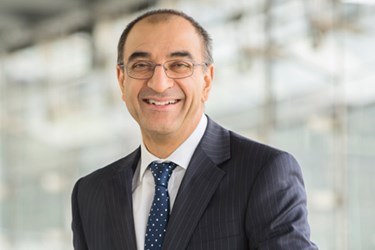Do You Think Your CEO Meets With Your Customers Enough?

By Rob Wright, Chief Editor, Life Science Leader
Follow Me On Twitter @RfwrightLSL

From the cutting room floor: April 2015 issue
Read the full magazine article: Guiding Bayer's Global Innovation Engines To New Heights
I recently had the opportunity to interview Bayer board member Kemal Malik, who has global responsibility for innovation at his company. Though innovation takes up about 70 percent of his time, he also has geographic business responsibilities for the North and Latin America regions. “Because innovation is so fundamental to everything we do, I like to think of new ways of working it into everything I am doing,” he shares. One way he does this is by using his regional business responsibility as an opportunity to get close to customers. While this seems obvious, I wonder how often c-level executives take the time to go visit their customers?
Don’t Let Seniority Inhibit Your Ability To Engage
Malik has met with customers such as Del Monte fruit farms in Chile and soybean farms in Brazil, just to name a few. “Because of my seniority, I get access to a lot of people internally, but also externally — board leaders, government bodies, ministers, health officials, all the way down to patient groups who are actually consuming our drugs or farmers who are using our products,” he says. Though seniority has the advantage of creating access, if you want to get access to customer knowledge, Malik’s advice is not to make your title a focal point of the discussion. “If you go there as a senior person from the home office asking questions like, ‘Are we doing a good job?’ all you are going to get is, ‘Yes, you guys are fantastic.’” Instead, his approach is to introduce himself simply as Kemal from Bayer and ask customer-focused questions to learn what is important to them, their needs, as well as the challenges they face — all before mentioning how Bayer can help.
One pleasant surprise from speaking to customers for Malik has been his realization that many research processes between crops and pharma are very similar in terms of the small molecule chemistry. Understanding these similarities has allowed Bayer to maximize synergies across the organization between crop science and healthcare (e.g., interdisciplinary project teams).
Are You Getting The Most Out Of Your Educational Conference Experience?
In addition to meeting with customers at their place of business, Malik says he attends a lot of academic conferences. He says attending these reduces your risk as a high-level executive of being taken to a particular individual or company that feels “obligated” to be friendly. “You're just meeting people in an academic environment,” he states. Because of the therapeutic areas in which Bayer operates on the healthcare side, Malik tries to go to one of the cancer meetings (e.g., ASCO or AACR), one of the cardiology meetings (e.g., American Heart Association’s scientific sessions or ACC), and then one other meeting, ideally in crop science. At these meetings Malik maximizes his opportunity to network. “At cancer meetings, I’ll go to our booth and just stand there. Before you know it, you meet a doctor who will tell you what they really think about your company,” he says. These big meetings, with lots of people, create an environment where Malik can be just another employee — Kemal, from Bayer. “You’ll bump into people during a break, around a coffee table or a machine, and you will be amazed what you can learn when you just start talking to them —especially if you are not focused on your title,” he states.
Many people would probably find Malik’s suggestion to improve your networking by standing at a conference booth to be trite advice. However, I can tell you, I have had plenty of executives admit to me that they have attended some of the biggest educational tradeshow conferences in our industry and never once set foot on the exhibit show floor. Even more telling is that these executives are two to three levels down from Malik’s position. Though a variety of reasons are offered as to why these folks don’t make the time to walk the exhibit floor or even to check out their company’s booth, it makes me wonder if they are getting the most out of this educational opportunity. I frequently chastise vendors for not finding at least one educational session to attend to gain a better understanding of what their customers care about. Conversely, if you are a biopharma leader attending a conference where your company has a booth, what opportunity are you missing to learn about your customers or employees by not venturing down to the show floor?
According to Malik, meeting with customers is key to making sure innovation at your company doesn’t reside inside a bubble. “It’s not just about having really smart ideas. It’s about linking those ideas and innovation to the customer who will benefit,” he attests. But another key to innovation is serendipity. The next time you are at a conference, be sure to take advantage of some of the serendipitous connection opportunities which exist on the tradeshow floor. It might turn out to be the most insightful educational experience you encounter.
